St Albans sinkhole: Geophysical surveys to find other pits
- Published
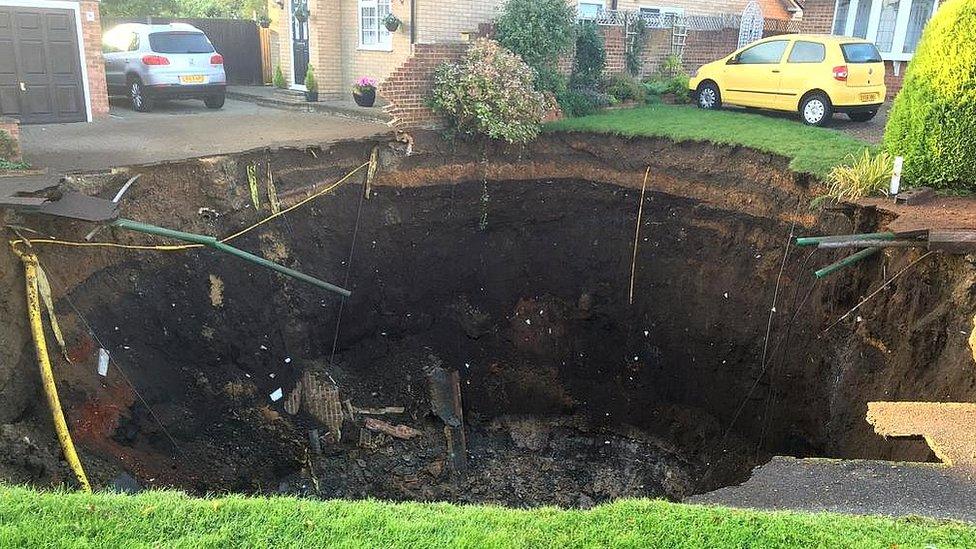
The giant hole on Fontmell Close opened up in the early hours of Thursday morning
A geophysical survey has begun under a housing estate where a 33ft (10m) deep sinkhole opened up on Thursday.
Hertfordshire County Council has commissioned the study after the hole, which was 66ft (20m) wide, appeared on Fontmell Close in St Albans.
A local history society said the Bernard's Heath area was covered in brickmakers' clay pits in the 19th Century.
The council has spent the weekend filling in the hole with concrete.
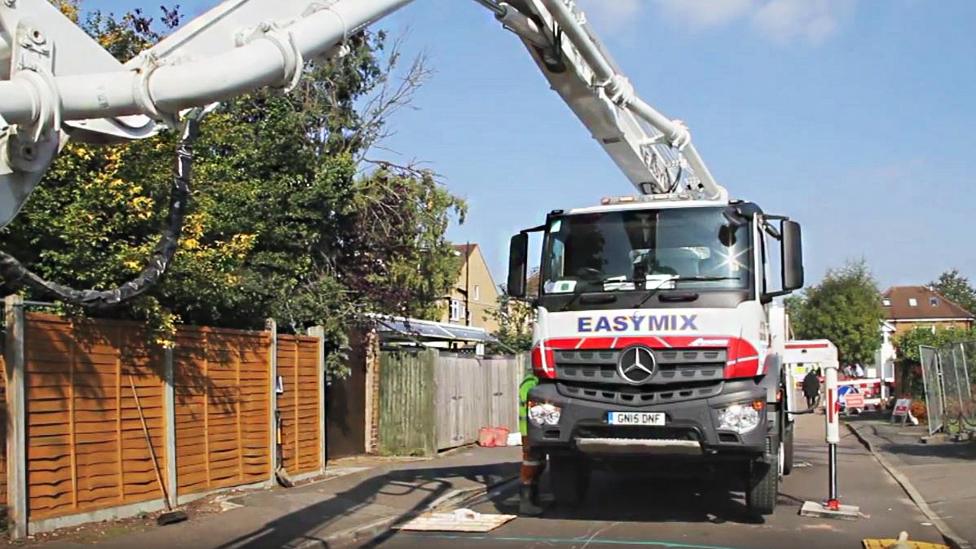
Lorries began pumping foamed concrete into the sinkhole on Friday

An access has been created to Bridle Close over the rim of a former clay pit, according to local historian Roger Miles
About 77,000 litres were pumped into it on Friday with a further 100,000 litres on Saturday.
It was being left to set on Sunday and the plan was to fill it with another 100,000 litres on Monday.
'Minds at ease'
Roger Miles, an amateur archaeologist with the St Albans & Hertfordshire Architectural & Archaeological Society, said brickmaking had existed for at least 300 years until the early 1900s, when many pits were filled in with the city's rubbish.
He said clay pits would have exposed the underlying chalk layers to more water, which could have led to crumbling and fissures.
"According to Ordnance Survey maps clay pits extended very close to where the sinkhole is and many had reverted to woodland over the past century," he said.
"We know the locations of some pits, but there may be others which were never mapped, so we need a fresh study to put householders' minds at ease.
"You can get a very good idea of what is under the ground without digging."

A generator serving houses on Fontmell Close sits next to the now-wooded rim of a former clay pit
A council spokeswoman said the survey work would be non-invasive and detecting equipment could be used to pick up any underground anomalies such as weak spots or voids.
She said it could take weeks before the results were known.
Once all the concrete was set, it was hoped utilities could be fully restored to the 50 homes which were affected by the end of the week.
No-one was injured when the hole appeared but five homes were evacuated.
The council confirmed Fontmell Close had been resurfaced a year ago.

What causes a sinkhole?
The British Geological Survey, external says there are several different types of sinkhole, sometimes known as "dolines".
Some happen as a result of surface dissolution of the soluble rock, external by rainfall or acidic groundwater.
They can occur where a thin covering of loose material such as sand, clay or soil covers soluble rocks beneath.
In other cases, the gradual collapse of a cave passage at depth can cause a sinkhole.
Some are caused by the erosion of weak, unconsolidated material by flowing water.
If a giant hole is caused by man-made factors, such as a collapsed mine, then it is technically called a crown hole, rather than a sinkhole which is formed naturally.

- Published2 October 2015
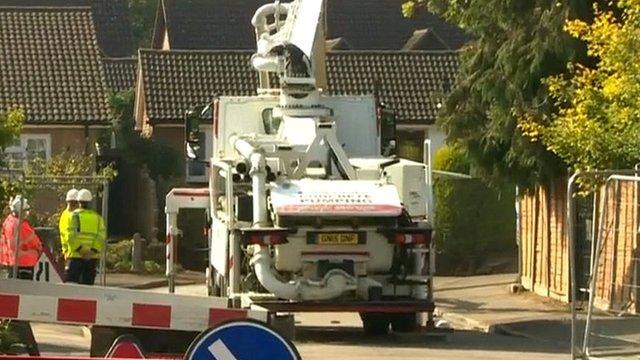
- Published1 October 2015
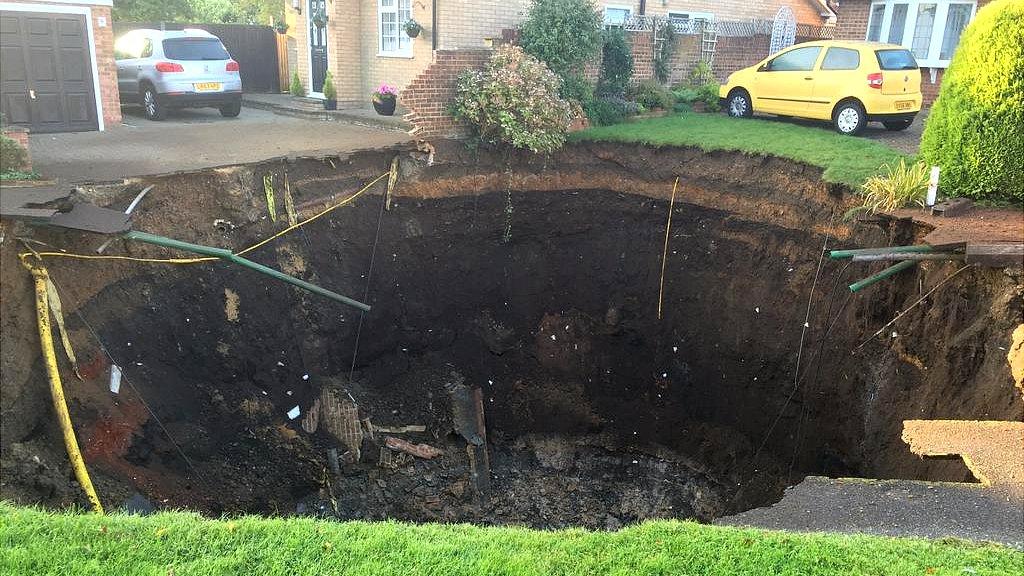
- Published1 October 2015

- Published24 February 2015
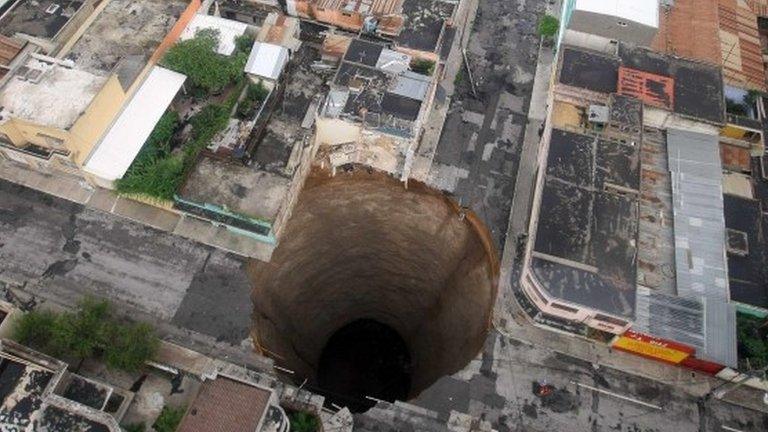
- Published2 February 2014

- Published4 March 2013
